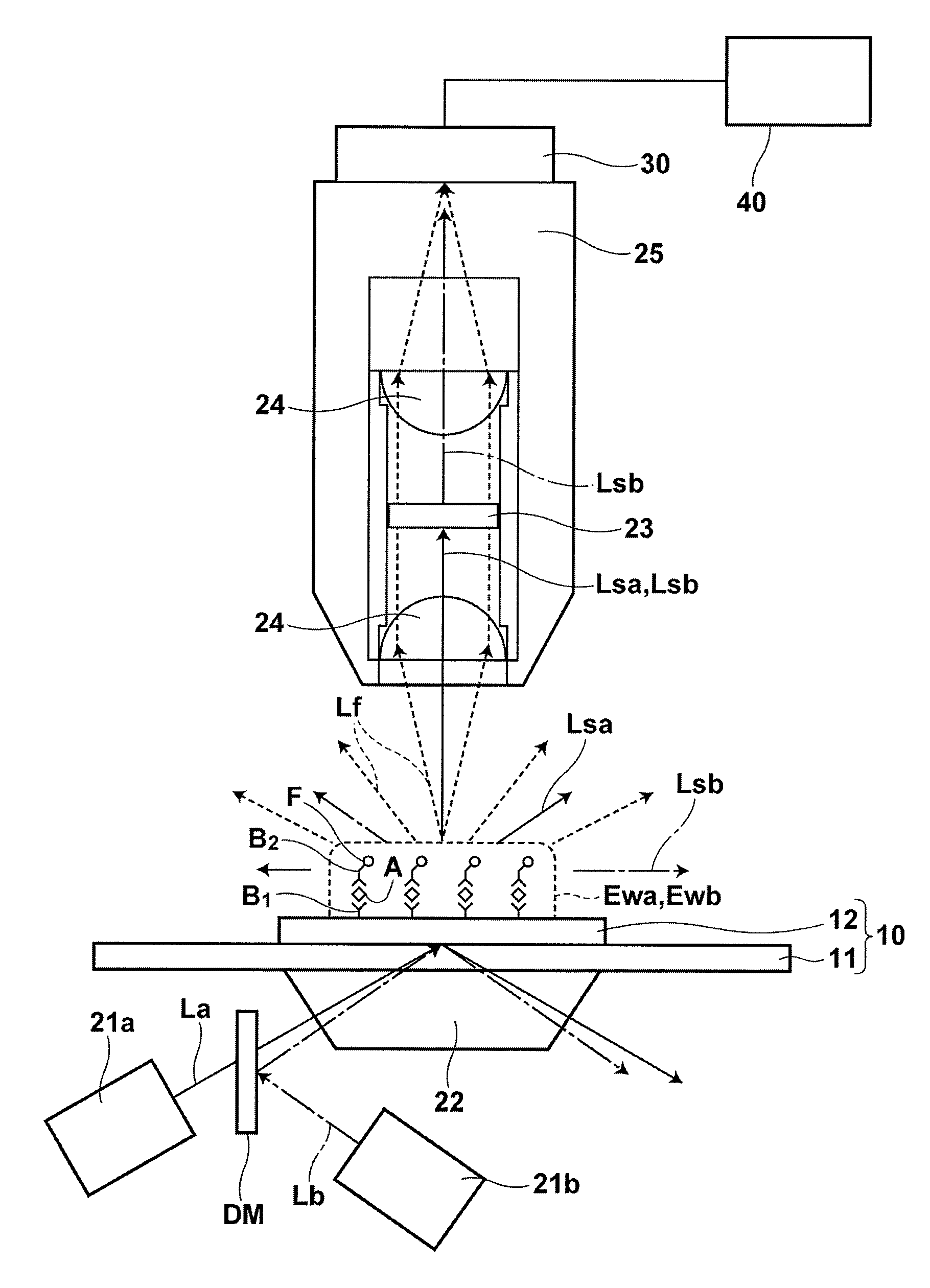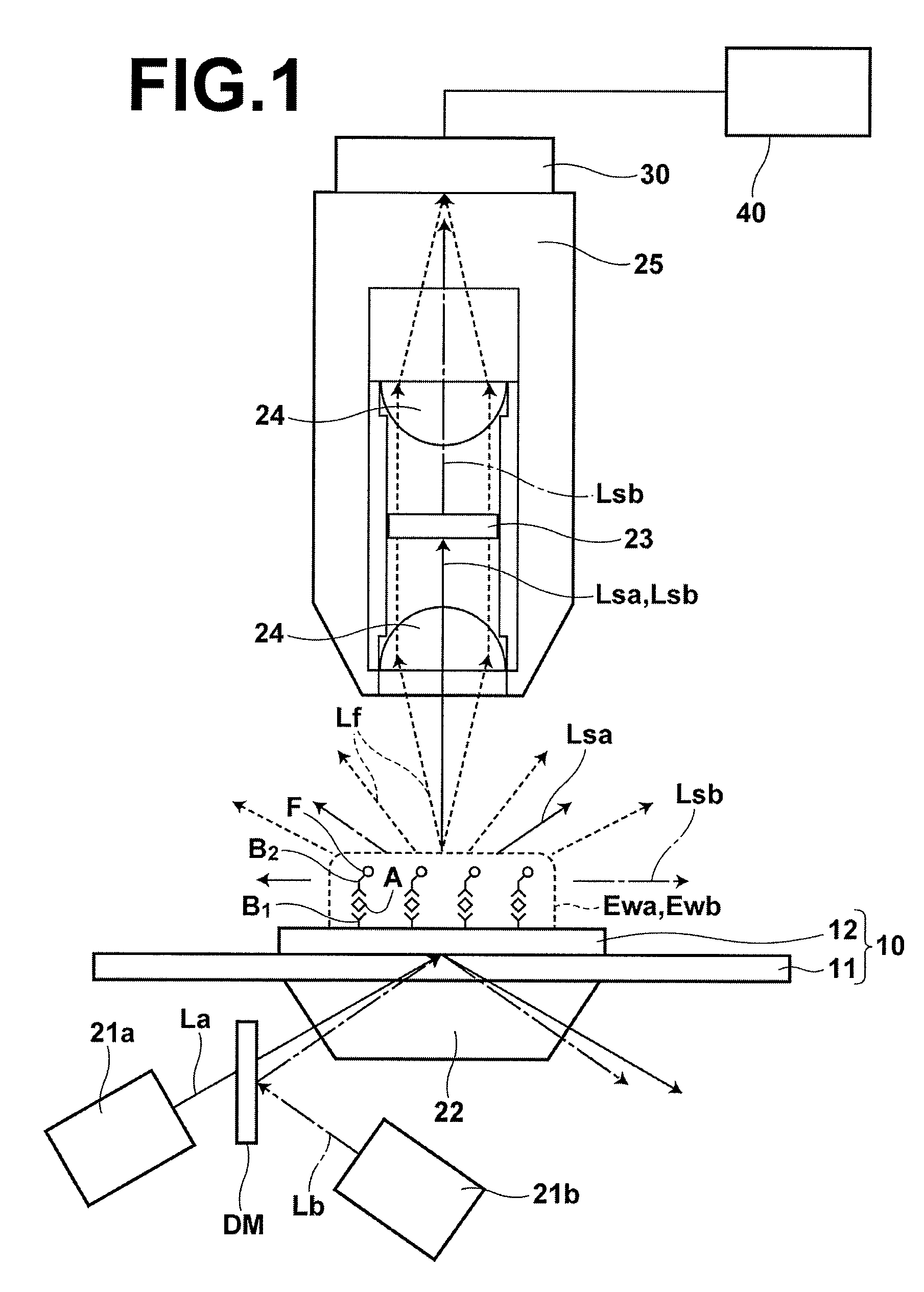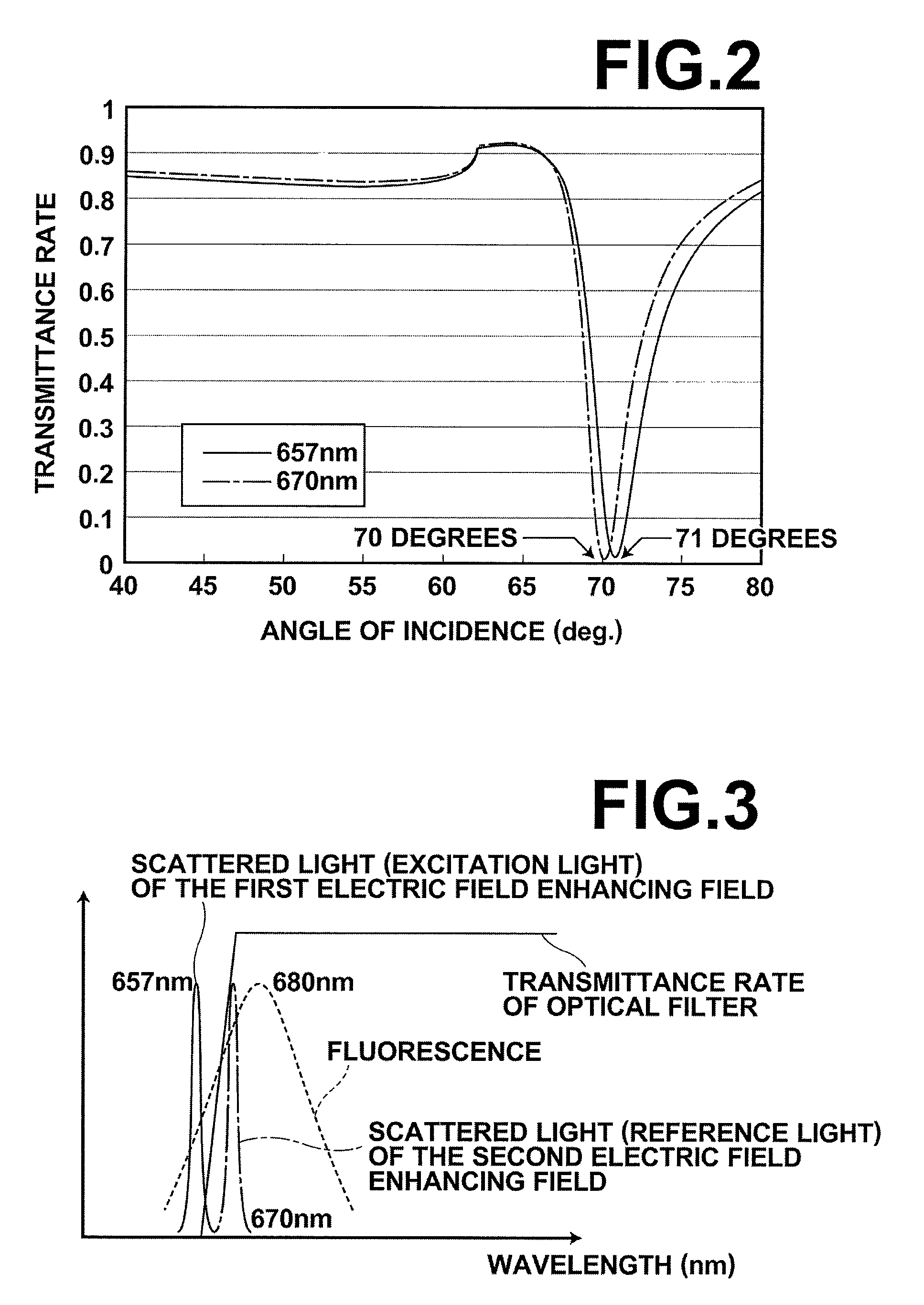Flourescence detecting method and fluorescence detecting apparatus
a fluorescence detection and fluorescence technology, applied in the direction of fluorescence/phosphorescence, luminescent dosimeters, optical radiation measurement, etc., can solve the problems of poor reproducibility, difficult to completely uniformize all of the factors for each measurement, and low cost. , to achieve the effect of low cos
- Summary
- Abstract
- Description
- Claims
- Application Information
AI Technical Summary
Benefits of technology
Problems solved by technology
Method used
Image
Examples
first embodiment
[0049]FIG. 1 is a schematic diagram that illustrates a fluorescence detecting apparatus according to a first embodiment of the present invention.
[0050]As illustrated in FIG. 1, the fluorescence detecting apparatus is equipped with: a sensor chip 10 constituted by a dielectric plate 11 and a metal film 12; a light source 21a that emits an excitation light beam La having a wavelength of 657 nm that excites fluorescent labels F; a light source 21b that emits a reference light beam Lb having a wavelength of 670 nm, which is longer than the wavelength of the excitation light beam La; a prism 22, on which the sensor chip 10 is placed; an optical system DM for guiding the reference light beam Lb such that it passes through the prism 22 and enters the interface between the dielectric plate 11 and the metal film 12 such that a second electric field enhancing field Ewb is generated on the metal film 12; a photodetector 30 for detecting fluorescence Lf emitted by the fluorescent labels F which...
second embodiment
[0083]A second embodiment of the present invention differs from the first embodiment only in that the wavelength of a reference light beam Lb is 780 nm, an excitation light beam La and the reference light beam Lb are emitted simultaneously, and two photodetectors are employed. Accordingly, descriptions of components of the second embodiment which are the same as those of the first embodiment will be omitted insofar as they are not particularly necessary.
[0084]As illustrated in FIG. 4, a fluorescence detecting apparatus according to the second embodiment of the present invention is the fluorescence detecting apparatus according to the first embodiment illustrated in FIG. 1, with a dichroic mirror 23′ provided between the two planoconvex lenses 24 and toward the side of the optical filter 23 from which light enters, and a second photodetector 30b. Note that the second photodetector 30b is connected to the correction calculating mechanism 40 so as to transmit detected light signals the...
PUM
| Property | Measurement | Unit |
|---|---|---|
| wavelengths | aaaaa | aaaaa |
| wavelengths | aaaaa | aaaaa |
| wavelength | aaaaa | aaaaa |
Abstract
Description
Claims
Application Information
 Login to View More
Login to View More - R&D
- Intellectual Property
- Life Sciences
- Materials
- Tech Scout
- Unparalleled Data Quality
- Higher Quality Content
- 60% Fewer Hallucinations
Browse by: Latest US Patents, China's latest patents, Technical Efficacy Thesaurus, Application Domain, Technology Topic, Popular Technical Reports.
© 2025 PatSnap. All rights reserved.Legal|Privacy policy|Modern Slavery Act Transparency Statement|Sitemap|About US| Contact US: help@patsnap.com



